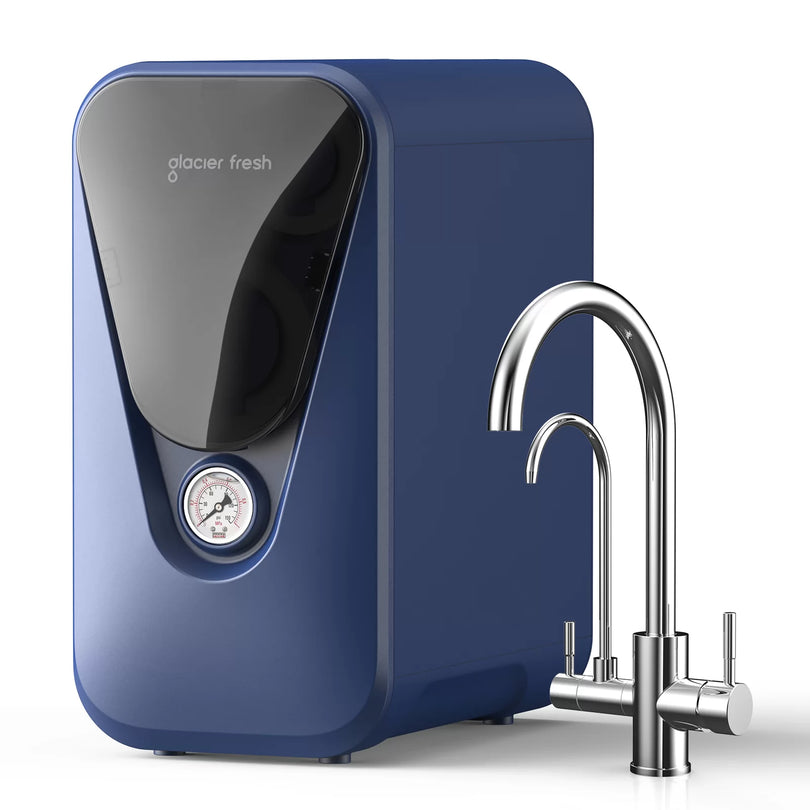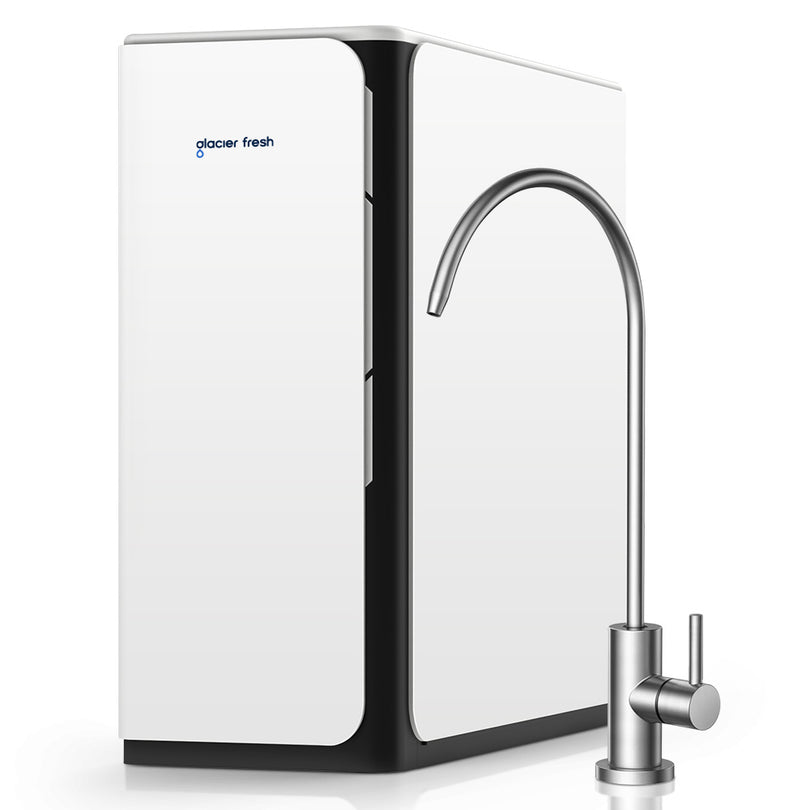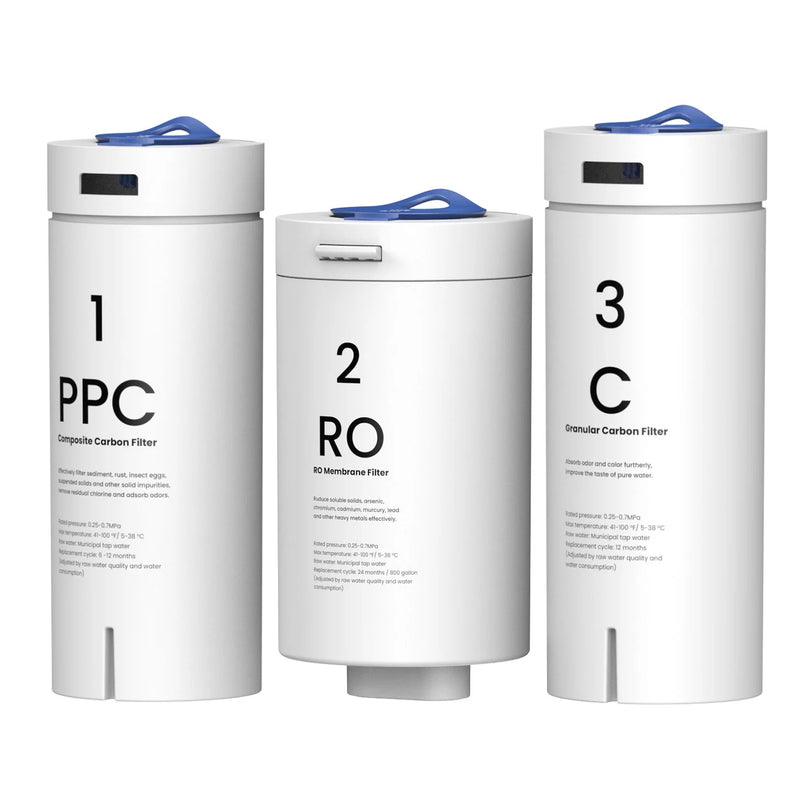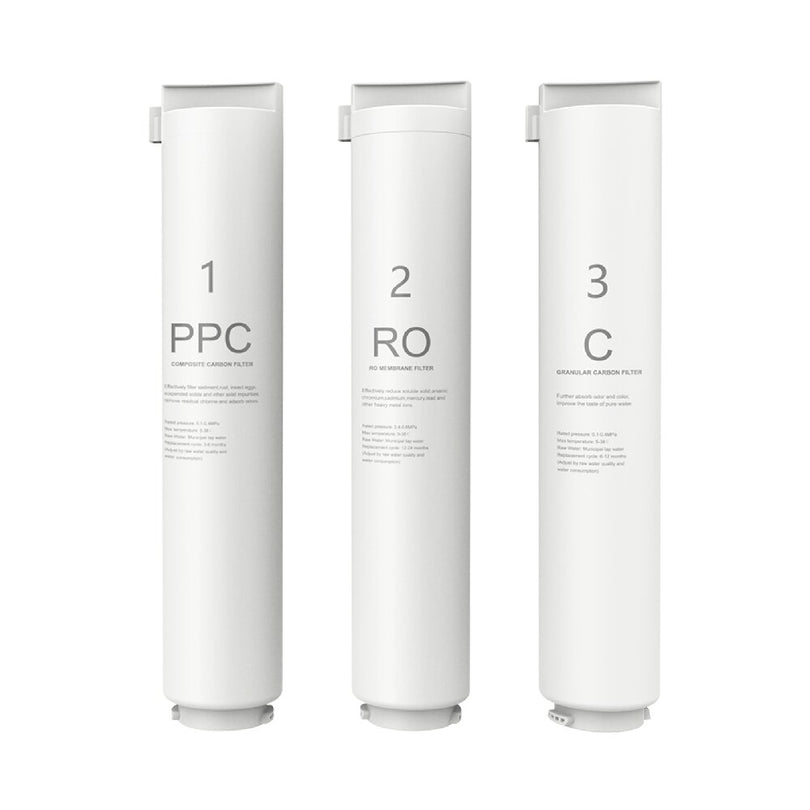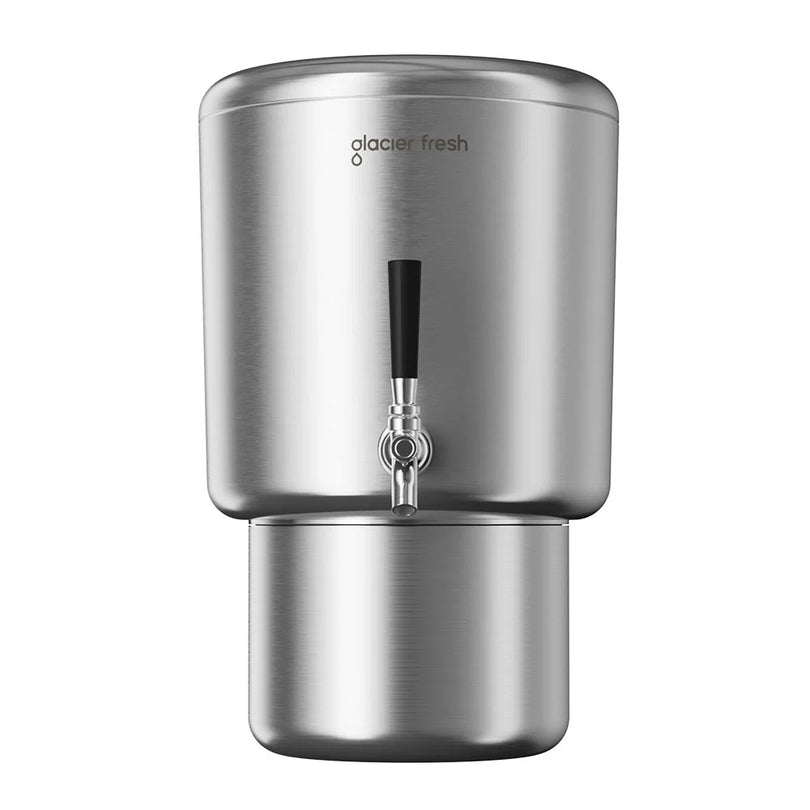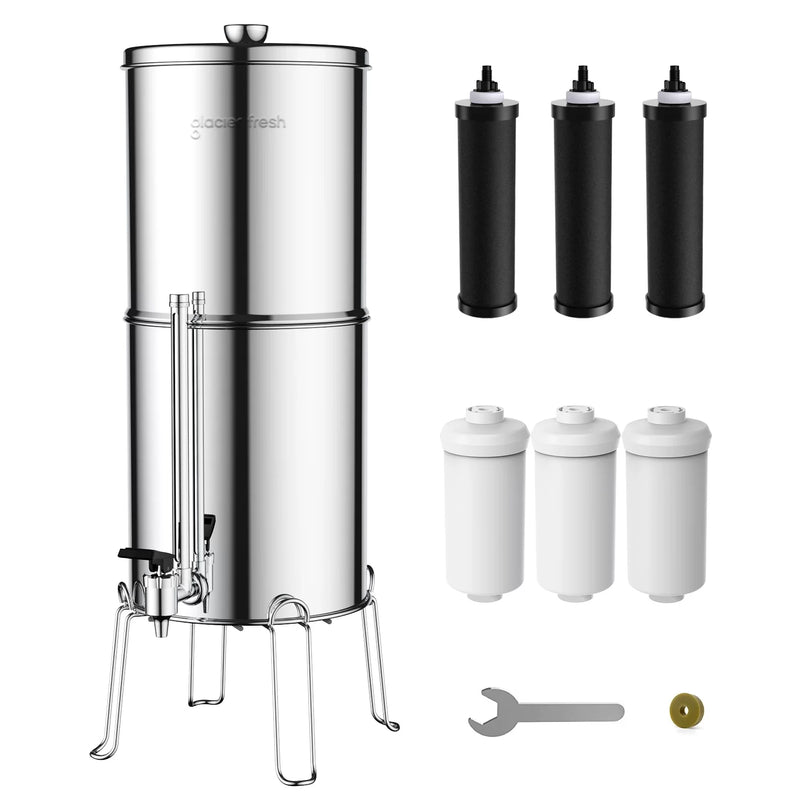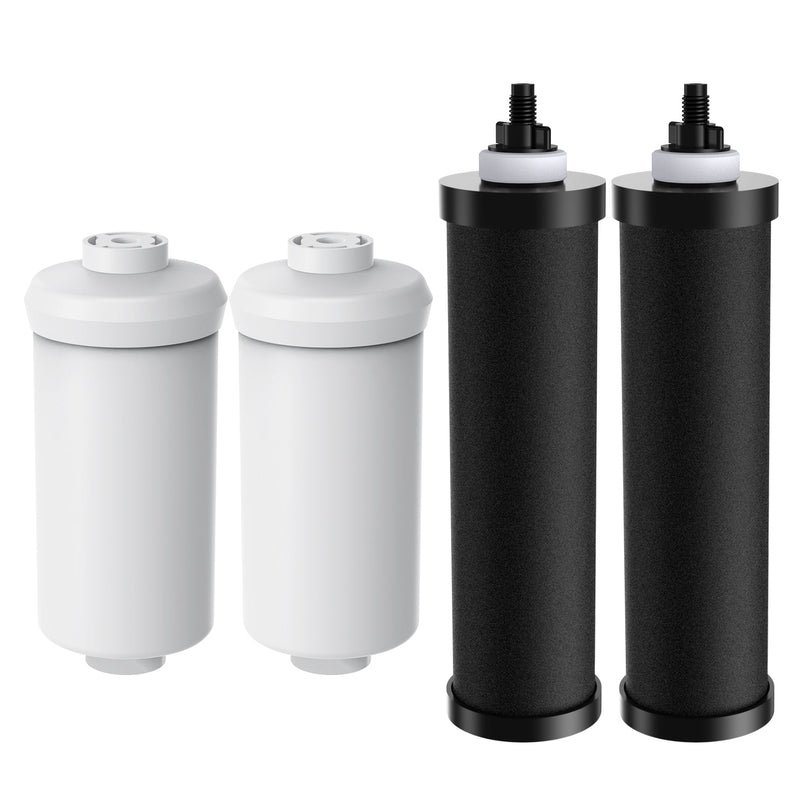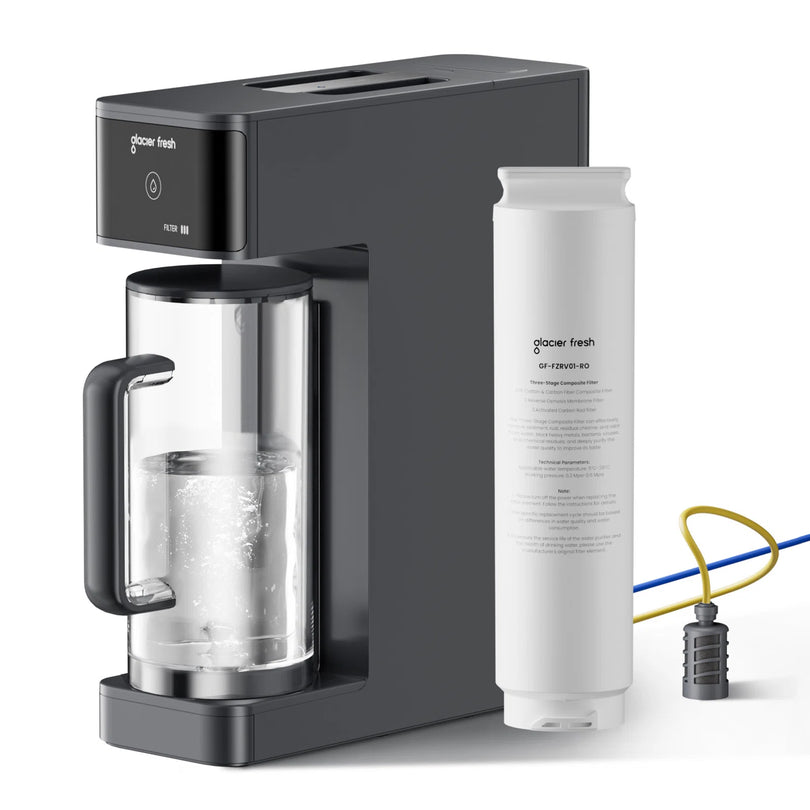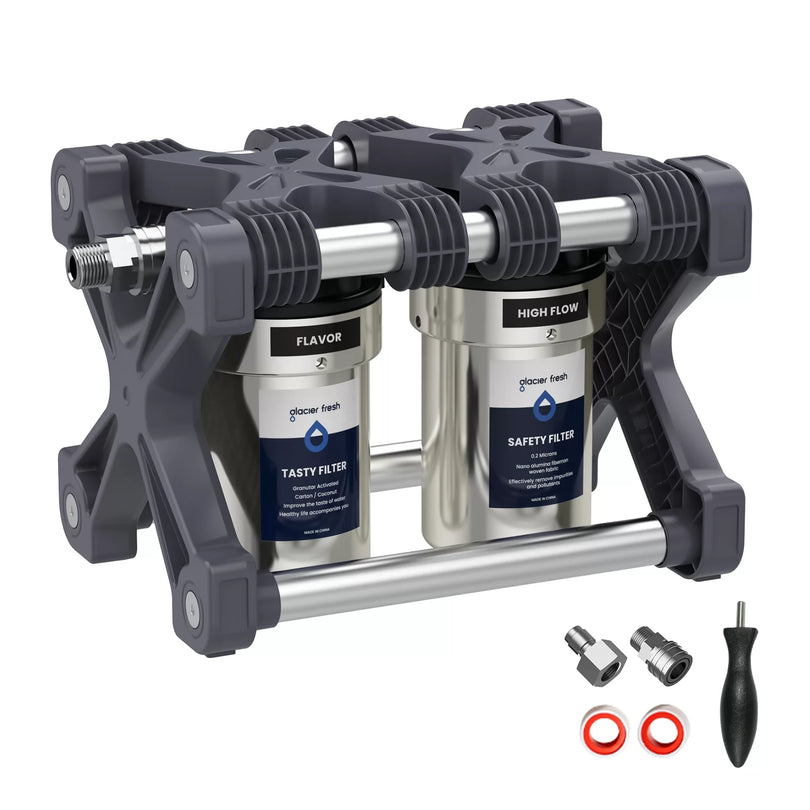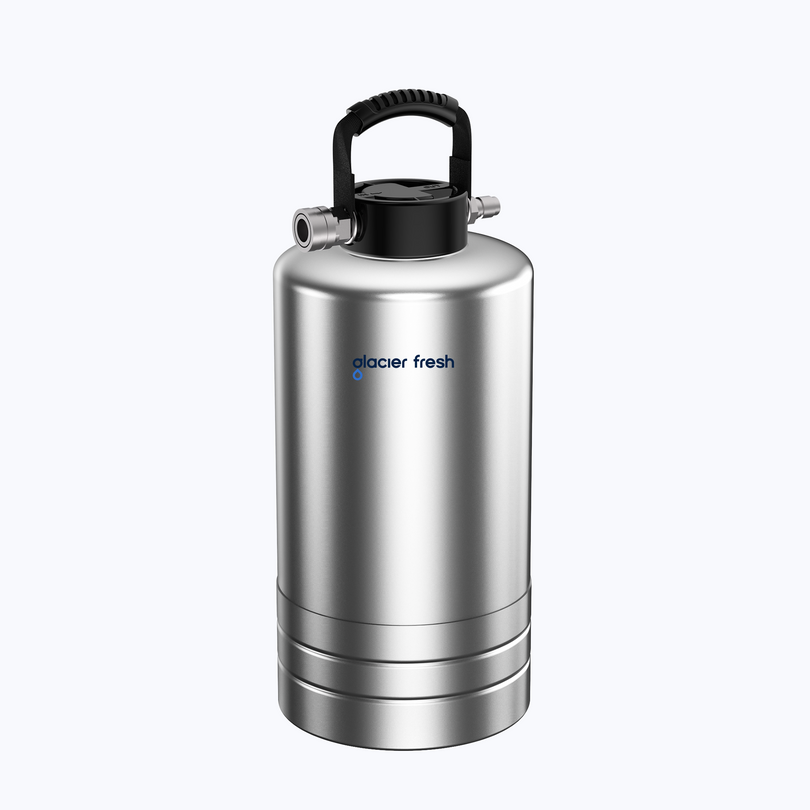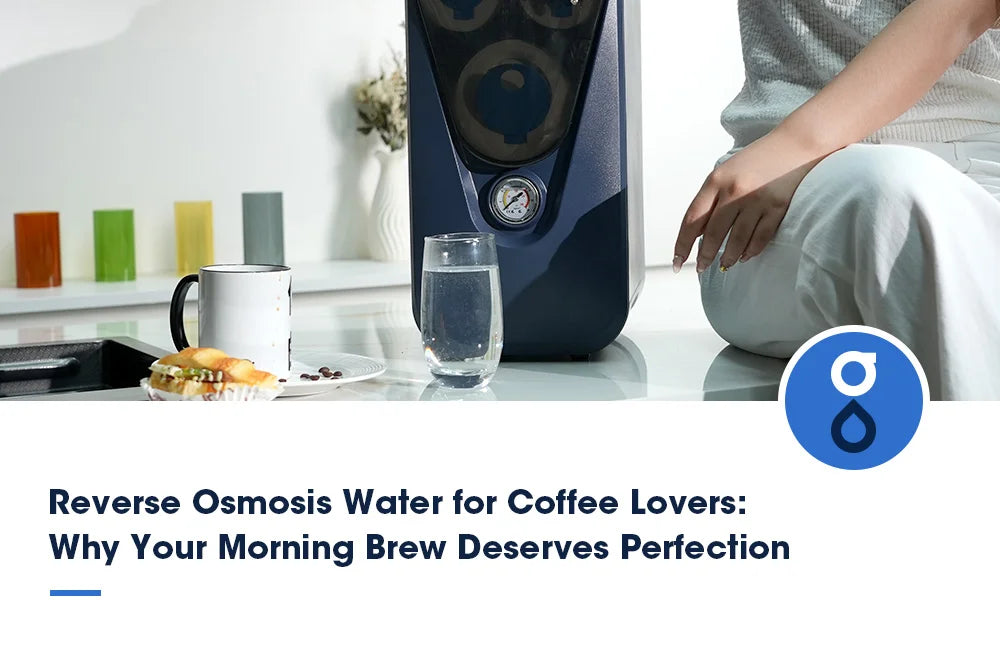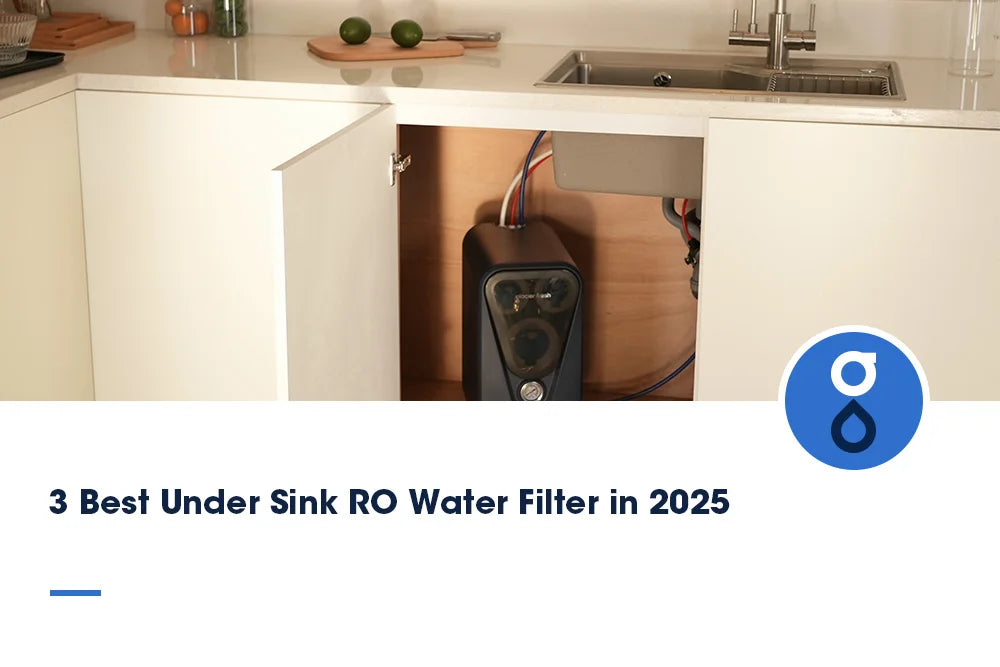Table of Contents:
The science of water and coffee flavor
What is reverse osmosis (RO) water?
What makes reverse osmosis water different?
Benefits of reverse osmosis water for coffee lovers
Common concerns about reverse osmosis water for coffee
Brewing with reverse osmosis water: practical tips
Choosing an RO system for coffee enthusiasts
FAQs
Conclusion
You’ve spent hours selecting the right beans, adjusting your grinder, and refining your brew method. But there’s one element you may be overlooking---water. Since a cup of coffee is composed of approximately 98% water, the quality of that water plays a more significant role than most people realize.
If your tap water tastes metallic, chalky, or carries the unmistakable tang of chlorine, those flavors inevitably find their way into your morning brew. That’s where reverse osmosis water steps in. Designed to strip away impurities and deliver consistency, RO water might just be the final piece of the puzzle in achieving your perfect cup.
The science of water and coffee flavor

When hot water meets freshly ground coffee, it extracts oils, acids, and soluble compounds that create the flavors we love. But what’s in your water determines how well that extraction happens.
- Hard water (rich in calcium and magnesium) can lead to bitter, overpowering flavors and nasty limescale buildup in your kettle or espresso machine.
- Soft water may lack enough minerals to extract flavor properly, leaving coffee dull and flat.
- Chlorine and other chemicals can mask natural aromas, giving your brew an unpleasant chemical edge.
That’s why the Specialty Coffee Association (SCA) has developed water quality standards. They recommend brewing water with 75–150 ppm total dissolved solids (TDS), balanced mineral content, and no chlorine. Staying in that range brings out sweetness, clarity, and balance in every cup.
What is reverse osmosis (RO) water?
Reverse osmosis (RO) water is water that has been purified through a semi-permeable membrane, removing most impurities, chemicals, and dissolved solids. In simple terms, RO filtration “forces” water through a fine membrane that only allows water molecules to pass, leaving behind:
- Chlorine and chloramines.
- Heavy metals (like lead and mercury).
- Excess minerals, such as calcium and magnesium.
- Other contaminants include pesticides, chemicals, and sediments.
The result is water that is exceptionally clean and neutral in taste, providing the perfect foundation for brewing coffee. Unlike distilled water, which is completely flat, RO water can be customized with remineralization, allowing you to add back the ideal mineral content for optimal coffee extraction.
What makes reverse osmosis water different?

Reverse osmosis is a multi-stage filtration process that forces water through a semi-permeable membrane. This removes:
- Chlorine and chloramines.
- Heavy metals (like lead).
- Dissolved solids (like excess calcium or magnesium).
- Other contaminants that affect taste and health.
Compared with other options:
- Tap water: inconsistent, often with chemicals.
- Distilled water: too pure, no minerals for extraction.
- Carbon filters: good for chlorine, but don’t reduce hardness or TDS.
RO strikes a balance: clean, neutral water that’s free of off-flavors and customizable through remineralization.
Benefits of reverse osmosis water for coffee lovers
-
Flavor clarity
With impurities stripped away, you’ll taste the nuanced notes of your beans—whether it’s the fruity brightness of an Ethiopian or the chocolatey depth of a Colombian roast. -
Consistency
Every brew tastes the same, regardless of whether your local tap water changes from season to season. -
Protecting equipment
Espresso machines and kettles are expensive. RO water reduces scale buildup, extending its lifespan and saving you on maintenance. -
Balanced extraction
By controlling mineral content, RO water ensures even extraction, preventing the over-bitter or weak, sour results that come from poorly matched water.
Common concerns about reverse osmosis water for coffee
Some coffee purists argue that RO water is “too pure”, producing thin or flat-tasting brews. They’re partly right—just like distilled water, completely mineral-free RO water isn’t ideal for extraction. However, for some reverse osmosis systems, such as the Glacier Fresh U03, which can still retain some essential minerals that the human body needs.
And for most reverse osmosis systems in the market, the solution? Remineralization. By adding small amounts of calcium and magnesium back, you can achieve the optimal balance for coffee brewing. Options include:
- Mineral packets or drops specifically made for coffee.
- Blending RO water with a bit of filtered tap water.
- Using an RO system with a built-in remineralization stage.
Aim for 75–150 ppm TDS, which aligns with the SCA’s standards. That range produces bright, complex flavors while still protecting your equipment.
Brewing with reverse osmosis water: practical tips
- Drip Coffee & Pour-Over: Reverse osmosis water highlights subtle flavors and prevents bitterness.
- French Press: Cleaner extraction, fewer muddy notes.
- Espresso: Protects machines from scale while delivering consistent crema.
💡 Pro Tip: Try a blind taste test—brew one cup with tap water and one with RO water. Most people are shocked at how much smoother, brighter, and more complex the RO brew tastes.
Choosing an RO system for coffee enthusiasts
If you’re ready to upgrade your brewing water, consider these setups:
- Under-sink RO systems: Great for daily brewing and household use.
- Countertop RO dispensers: Compact and convenient for small kitchens.
- Portable RO pitchers: Ideal for travel or use in offices where tap water quality is questionable.
When shopping, look for:
- Remineralization filters or add-on options.
- Filter replacement frequency and costs.
- Daily output capacity (important for espresso machines).
FAQs
Can I use reverse osmosis water directly in my espresso machine?
Yes—but for best results, use RO with remineralization to hit the ideal TDS.
Is bottled RO water as good as a home system?
It’s similar, but less eco-friendly and far more expensive in the long term.
How do I determine if my RO water is within the correct TDS range?
Use a simple TDS meter. Adjust with mineral drops or blending until you’re in the 75–150 ppm range.
Conclusion
The perfect cup of coffee isn’t just about the beans or the brew method—it’s about the water that brings it all together. Reverse osmosis water provides purity, consistency, and control, ensuring that every sip reveals the flavors your roaster intended.
So, if you’ve invested in specialty beans, a precision grinder, and a great brewing setup, don’t let average water hold you back. Upgrade to RO water, and give your morning brew the perfection it deserves.

